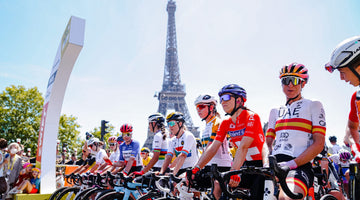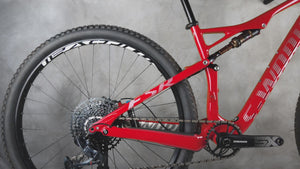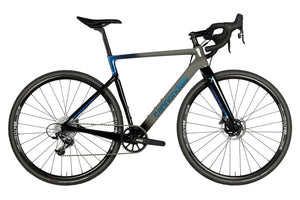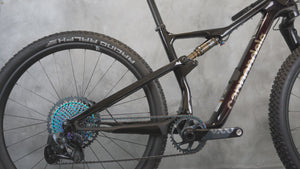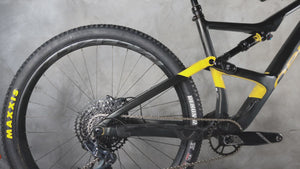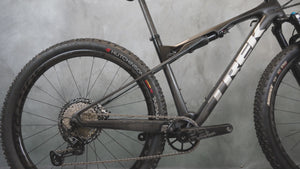What is the point of doing a bike fitting?
In this Article
Posted on June 22, 2023
Back pain, neck pain, aching knees, poorly adjusted cleats, have you ever had this type of pain on the bike? It may be that you are not well positioned on the bike? In addition to the size of the bike, a problem with the handlebars, saddle or incorrectly positioned cleats can lead to poor posture on the bike and thus chronic pain. But when we talk about bike fitting, there are still a lot of preconceived opinions: “too expensive”; “only for pros”; “my bike is fine”... Everyone has already heard comments like these. And yet, a bike fitting is sometimes that missing click that makes you want to ride more often, for longer, feeling more comfortable and more efficient!
In this new article, we will address the topic of bike fitting. Who are they for? Why should any cyclist do a bike fitting? What are the possible performance benefits? If you want to have your questions answered, keep reading 👇
What is a bike fitting?
A bike fitting is an analysis of the posture on your bike in order to make adjustments/modifications to your position or components and accessories (handlebars, saddle, shoes) to optimize your comfort, ease and performance on the bike.
But who better to talk to you about bike fitting than someone who is a specialist in the subject. We talked to Emmanuel who created Amamesure in Strasbourg to support cyclists and triathletes in their practice. He carries out bike fittings every day and now knows all the essential things to change / modify on a bike to be the best possible according to the cyclist's morphology.

Presentation of Amamesure
AMAMESURE was created 4 years ago with the main objective of democratizing bike fitting and thus making it accessible to all : accessible information, independent advice related to the material and a post-study follow-up. I wanted to put my knowledge at the service of cyclists and triathletes and thus avoid the pitfalls resulting from the practice.

Do not hesitate to visit the Amamesure website .

Misconceptions about bike fitting
- “It's only for the pros”; "I don't cycle enough to make it worthwhile".
Amamesure's answer: “Everyone has the right to be comfortable on their bike and thus take full advantage of the time spent on it. The vast majority of cyclists carrying out a bike fitting are people with a job, a family life,... they are rarely licensed competitors. Cycling is a passion, often an outlet and being able to practice your sport in comfort is the highest priority.”
- "It's too expensive"
This argument often comes up when we talk about this subject and yet when we think about it, the human is not too rational. Some are reluctant to put more than €200 into a bike fitting session when they might be willing to pay €70 for a cycling jersey and €60 for an appointment with the osteopath.
Amamesure's response: “You have to see it as an “investment”. We do it well for the bike. It is chosen so that it meets current and future needs according to the projects of each cyclist. What could be more stressful than not being able to draw the quintessence of it because you feel badly positioned on the bike. Just as with the purchase of a bicycle one thinks of the equipment, the bike fitting must be part of the initial expenses and this so, from the first turns of the wheels, to take advantage of it and return to it the next day with desire.
- "I do not need it" ; “I feel good on my bike”.
And yet, there are always a few things to optimize. I myself was in this case, I did not feel the need but it is because over time my body was able to adapt to "bad settings", non-optimal settings and that the problems could have arisen later.
Amamesure's answer: “It's true, the body knows how to adapt, but for how long? The body is a fabulous mechanism but it also has its limits and they will be quickly reached if you are regular in your practice. As you practice, you will improve your skills. You will go faster, you will dance on the pedals more often, you will launch attacks,… then one day, you will exceed your body's ability to stabilize. This will be the start of trouble. A little discomfort in the knee, then in the saddle. The feet will start to go numb, the hands too. Then your lower back will start hurting and so on. Then you leave your bike aside more and more often because looking at it you think back to all the inconvenience you have felt. All this you can avoid by carrying out a postural study.”
Why do a bike fitting?
1) Be comfortable on your bike: comfort, ease, better maneuverability
If you're comfortable on your bike, that's brain time available to fully appreciate your outing. You will also be more efficient because there will be no discomfort to bother you and you will lengthen your distances with each outing.
2) Be more efficient: optimized pedaling
The feet and their position are the basis of your fit on the bike. You can largely compare your feet to the foundations of a house. If they are poorly made, unstable, the first cracks will quickly appear on the walls and all the inconvenience that will go with it.
In bike fitting, it's the same principle. The right shoes for your feet. To the right length, width, shape,… Adapted tightening and work on mobility will give you excellent results. Then the choice of your pedals and the right angular freedom for your practice without forgetting the correct position of the cleats.

3) Avoid injury
Who starts a sport thinking: I'm going to have improbable pain, I'll be in so much pain that it will take me days to recover. No one! We all want to take advantage of this moment to have fun, clear our heads, be with our friends and enjoy it. However, there is still this old idea that cycling is a hard sport and it is normal to have pain. This is so wrong. Having your legs well loaded from a grueling outing is acceptable. Having tendinitis, a blocked back, numb hands for 5 days in a row is not normal. By carrying out a postural study, you put the odds on your side to avoid all this and thus skip the pain box and win €20,000!
4) Buy bikes and equipment adapted to your morphology
Very often the material is unsuitable, sometimes the chosen geometry is too big, too small or simply the wrong bike for the intended practice. With a pre-fitting, you put all the chances on your side to have the right bike for the right practice and above all adapted to your morphology.
What happens during a bike fitting at Amamesure?
During a bike fitting session, several main principles are generally followed to optimize the position of the cyclist on his bike. Here are some of those principles:
- The anamnesis: this first step helps to understand who the cyclist is, his past, his present and his projection in the practice of cycling. It is important because it will make it possible to better target needs and thus best meet expectations.
- Analysis of biomechanics: The bike fitting begins with an in-depth analysis of the biomechanics of the cyclist. This involves measuring and evaluating joint angles, body movements, pressure points and other parameters to understand how the rider interacts with their bike.
- Flexibility Assessment: Rider flexibility is considered to determine possible ranges of motion and necessary adjustments. Flexibility tests are done to assess the mobility of key joints, such as the hips, knees, and shoulders.
- Muscle balance study: A muscle imbalance analysis is performed to identify muscle groups that are weak or overstretched. This makes it possible to recommend specific strengthening exercises to correct these imbalances and improve pedaling efficiency.
- Adjustments to bicycle components: Depending on the results of the fitting study, adjustments may be proposed to the components of the bicycle, such as the height of the saddle, the angle of the handlebars, the length of the stem, etc. These adjustments aim to optimize ergonomics and reduce stress on the rider's body.
- Comfort and injury prevention: The main objective of a bike fitting is to improve the comfort of the cyclist and reduce the risk of injury. By adjusting the position on the bike according to physical characteristics and individual needs, it is possible to optimize weight distribution, improve aerodynamics and reduce uncomfortable pressure points.
- Ongoing evaluation and adjustments: Once adjustments have been made, it is important to regularly re-evaluate the rider's position to ensure that it remains optimal. Additional adjustments may be required based on changing physical condition, rider goals, or any other relevant factors.

These principles, combined with the expertise of a specialist in bike fitting, make it possible to obtain an optimal position which favors both the comfort and the performance of the cyclist.
Advice/tips from Amamesure:
💰 In your new bike budget, plan a bike fitting: you will save money and time
📏 When in doubt between two frame sizes, always choose the smaller size: a frame that is too long will always remain too long.
🦶The most important part of being well is and always will be your feet
👴 There are still too many old tips given to cyclists: find out for yourself, look for and cross the information, you will be surprised at the good information you will find.
🙏 And the last, do a bike fitting, then you can thank yourself for not having waited.




















